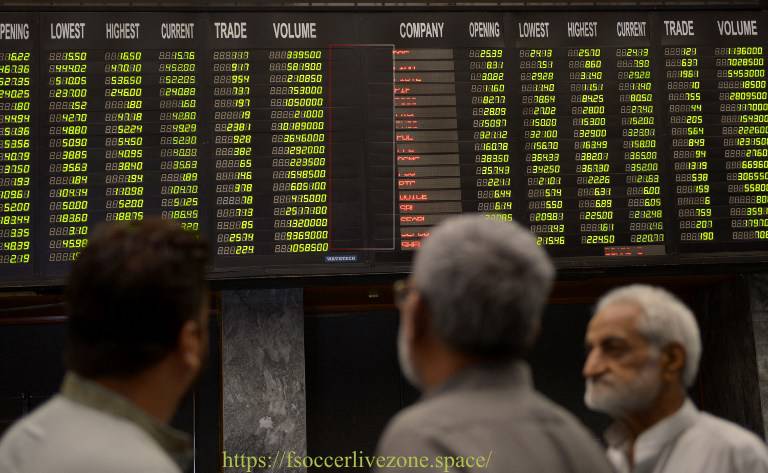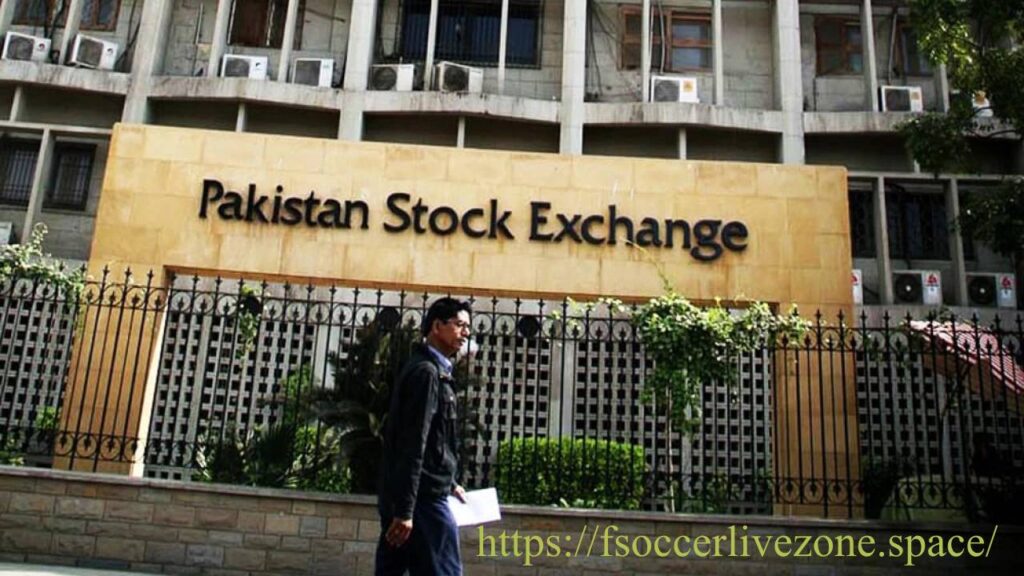The KSE-100 index has plunged over 9% in just four days amid rising India-Pakistan tensions. Learn about the reasons behind the fall, its impact on investors, and what lies ahead for the Pakistan stock market in 2025
The Pakistan stock market has witnessed one of its most turbulent weeks in recent history, as the KSE-100 index plummeted sharply amid growing geopolitical tensions with India. The recent Pahalgam terror attack on April 22, 2025, appears to have acted as a significant trigger for investor anxiety, dragging the benchmark KSE-100 index down by over 12.5% since that date. Within just four days, the market has experienced a steep 9.5% decline, with bears gaining control over the trading floor, sparking widespread concern across financial and political sectors alike.
Table of Contents
- KSE-100 Index Performance: A Steep Decline
- Key Market Movements in the Past Week
- Impact of India-Pakistan Tensions
- Historical Performance: A Pattern of Volatility
- Investor Sentiment and Institutional Reactions
- Future Outlook and Market Predictions
- What Should Investors Do Now?
KSE-100 Index Performance: Pakistan Stock Market
The Karachi Stock Exchange (KSE), Pakistan’s primary equity trading hub, is in the midst of a serious market correction. As of May 10, 2025, the KSE-100 Index has fallen more than 9% in just four trading days. The situation escalated on Thursday, when the index fell by 6% during intraday trading, forcing a temporary trading halt to prevent further panic selling.
The KSE-30 index, which tracks the top 30 companies by market capitalization, also felt the heat, falling 3%, its lowest level since December 19, 2024. It had earlier declined by 6.1% during the trading day before slightly recovering.
These figures reflect one of the sharpest corrections the Pakistan stock market has experienced in recent years, underscoring the sensitivity of regional markets to political instability.
Key Market Movements in the Past Week
The week starting May 6, 2025, saw sustained selling pressure:
- Monday, May 6: Index declined 1.2% due to weak investor sentiment.
- Tuesday, May 7: A sharp dip of 2.4% was recorded as news of cross-border skirmishes circulated.
- Wednesday, May 8: A further 1.8% fall compounded the week’s losses.
- Thursday, May 9: Panic selling took over, resulting in a massive 6.1% drop intraday, with a final loss of 3% for the day.
In just these four sessions, the KSE-100 index fell by over 3,000 points, reducing the market capitalization by billions of Pakistani rupees.

Impact of India-Pakistan Tensions:Pakistan Stock Market
The current decline in Pakistan’s stock market is not occurring in a vacuum. The Pahalgam terror attack in Indian-administered Kashmir on April 22, 2025, which claimed several lives, dramatically intensified bilateral tensions between India and Pakistan. This event sparked aggressive political rhetoric, cross-border accusations, and heightened military alertness on both sides.
Investors typically respond poorly to uncertainty, and geopolitical risks are among the most severe forms of such instability. The Pakistani market, already fragile due to economic challenges, including a high inflation rate, currency depreciation, and IMF loan conditionalities, found itself overwhelmed by the fresh crisis.
International investors have reportedly pulled back from Pakistani equities, while local institutional investors remained cautious, further fueling the sell-off.
Historical Performance: A Pattern of Volatility
Interestingly, the KSE-100 index has shown a tendency to drop during this period in past years. According to historical data:
- The index has fallen during this same timeframe in five of the past ten years.
- Political instability, budget uncertainty, and international conflicts have often played key roles in such declines.
The year-to-date (YTD) performance of the KSE-100 index now stands at -7%, marking a reversal from early 2025, when hopes of economic recovery had lifted market optimism.
Investor Sentiment and Institutional Reactions on Pakistan Stock Market
Investor sentiment has taken a nosedive amid these escalating tensions. Retail investors, in particular, are showing a flight to safety—with many liquidating equity positions and parking funds in safe-haven assets like gold or foreign currencies.
Leading brokerage firms have issued advisories warning clients about potential volatility ahead. Some of the key observations from analysts include:
- Arif Habib Ltd: Cautioned investors about short-term risks but advised long-term investors to stay put.
- Topline Securities: Highlighted that past geopolitical sell-offs have often been followed by sharp recoveries.
- AKD Securities: Emphasized the role of fiscal measures and political resolution in stabilizing market sentiment.
Furthermore, the State Bank of Pakistan (SBP) has been closely monitoring capital flows to ensure stability in the currency and bond markets.
Future Outlook and Market Predictions Next Pakistan Stock Market
While the immediate future looks uncertain, the outlook isn’t entirely bleak. Market analysts believe that if geopolitical tensions ease within the next few weeks, the market could stage a partial recovery.
Several factors could influence a turnaround:
- Diplomatic dialogues or back-channel communications between India and Pakistan.
- Stabilization of the Pakistani rupee.
- Positive news on the economic front, including foreign investment announcements.
- Clarity on Pakistan’s upcoming 2025-26 budget, expected in June.
Historically, geopolitical dips in the market have presented buying opportunities for contrarian investors. However, the key is timing and risk tolerance.

What Should Investors Do Now? Pakistan Stock Market
Given the current volatility, investors are advised to follow a balanced approach:
- Avoid panic selling: Knee-jerk reactions may lead to long-term losses.
- Focus on fundamentals: Companies with strong balance sheets, consistent cash flows, and dividend history are more likely to survive and recover.
- Diversify portfolios: Mix equity investments with bonds, real estate, and foreign currencies to hedge against risk.
- Keep an eye on developments: Political developments in the subcontinent will remain a crucial driver of sentiment in the coming weeks.
Long-term investors might also consider Systematic Investment Plans (SIPs) or gradual accumulation strategies during dips, especially in blue-chip sectors like banking, cement, energy, and telecommunications.
Conclusion about Pakistan Stock Market
The recent sharp fall in the KSE-100 index, driven by renewed India-Pakistan tensions, underscores the vulnerability of emerging markets to geopolitical risks. While the market has shed over 12.5% since April 22, experts caution against overreacting, highlighting that such corrections often pave the way for recovery once tensions subside. Pakistan Stock Market
As always, a prudent investment strategy, guided by data, risk appetite, and long-term goals, remains the best shield against market storms. For now, all eyes remain on diplomatic channels and political leadership to de-escalate tensions and stabilize investor confidence in Pakistan’s financial markets. for Pakistan Stock Market





